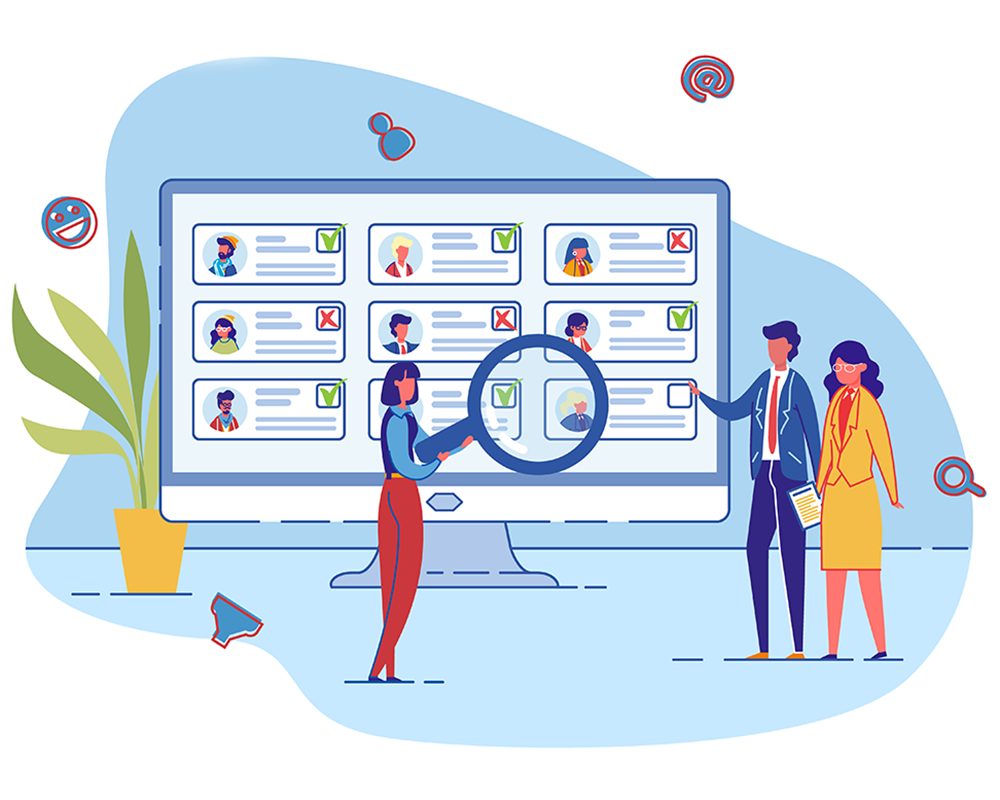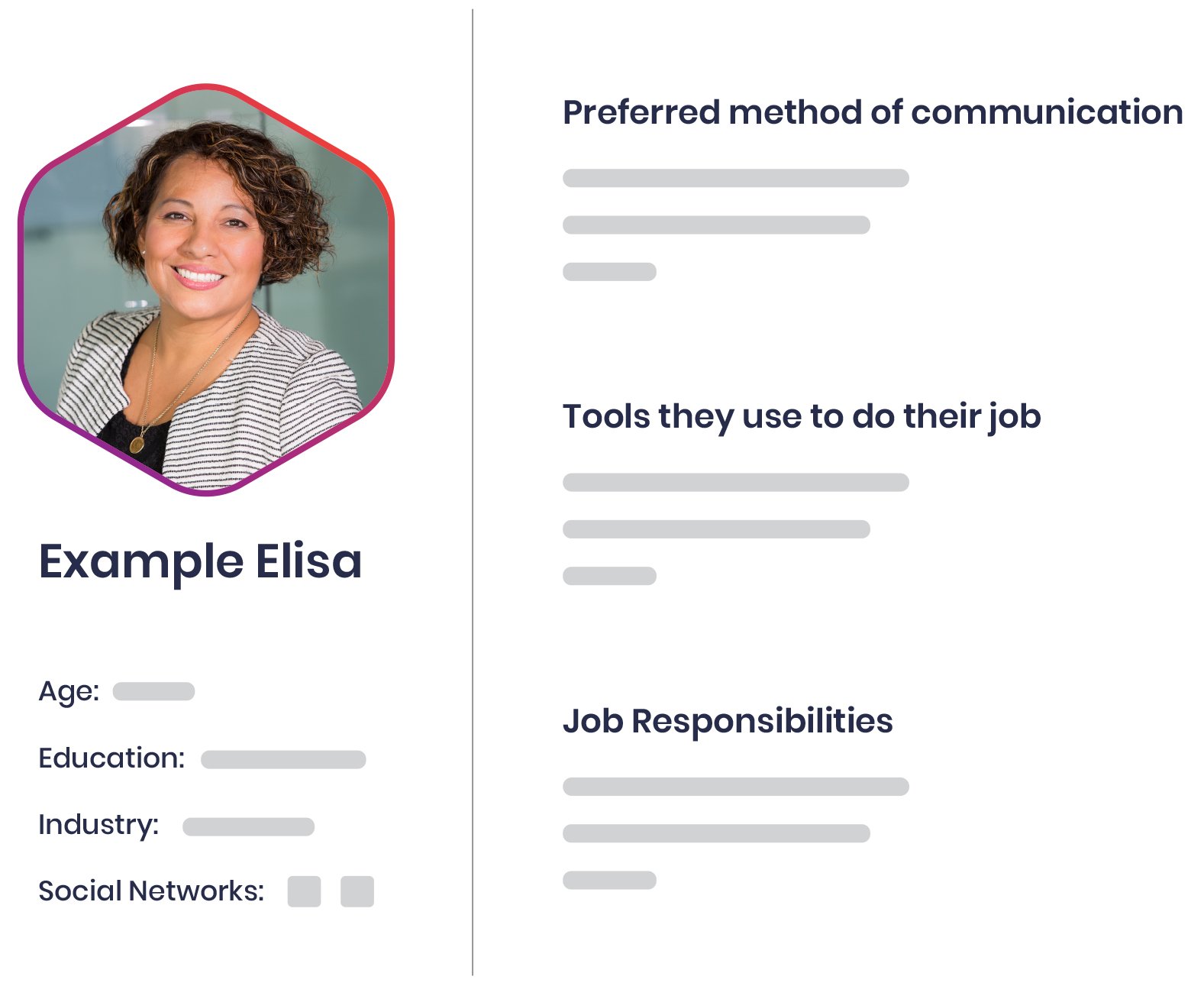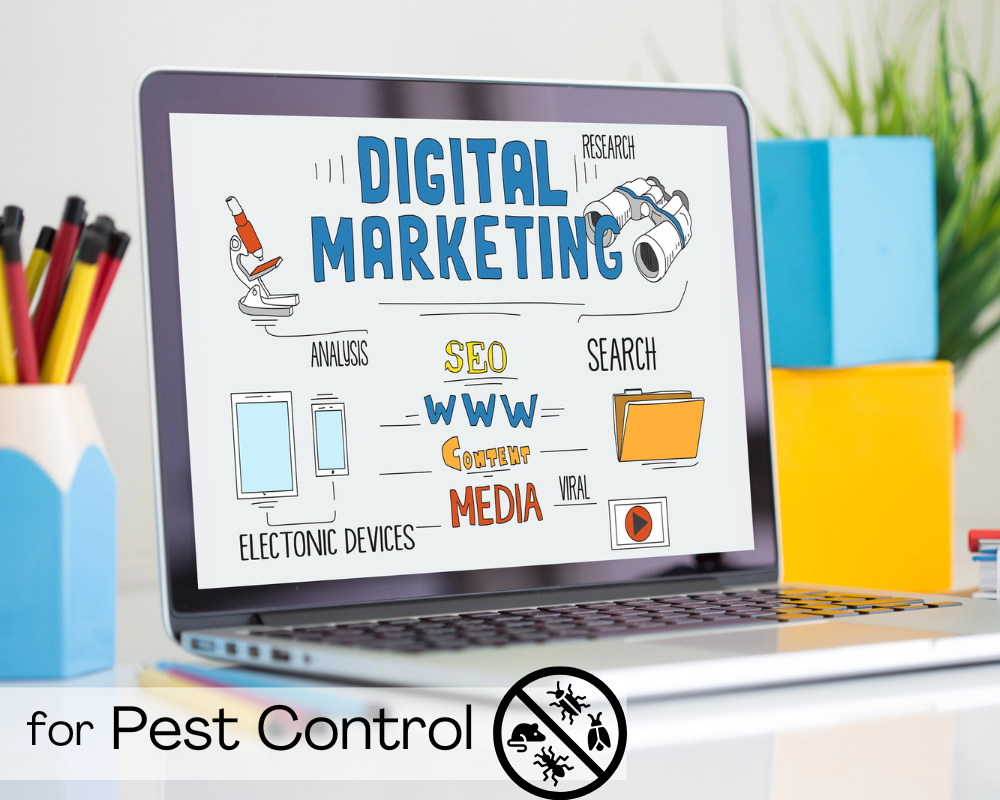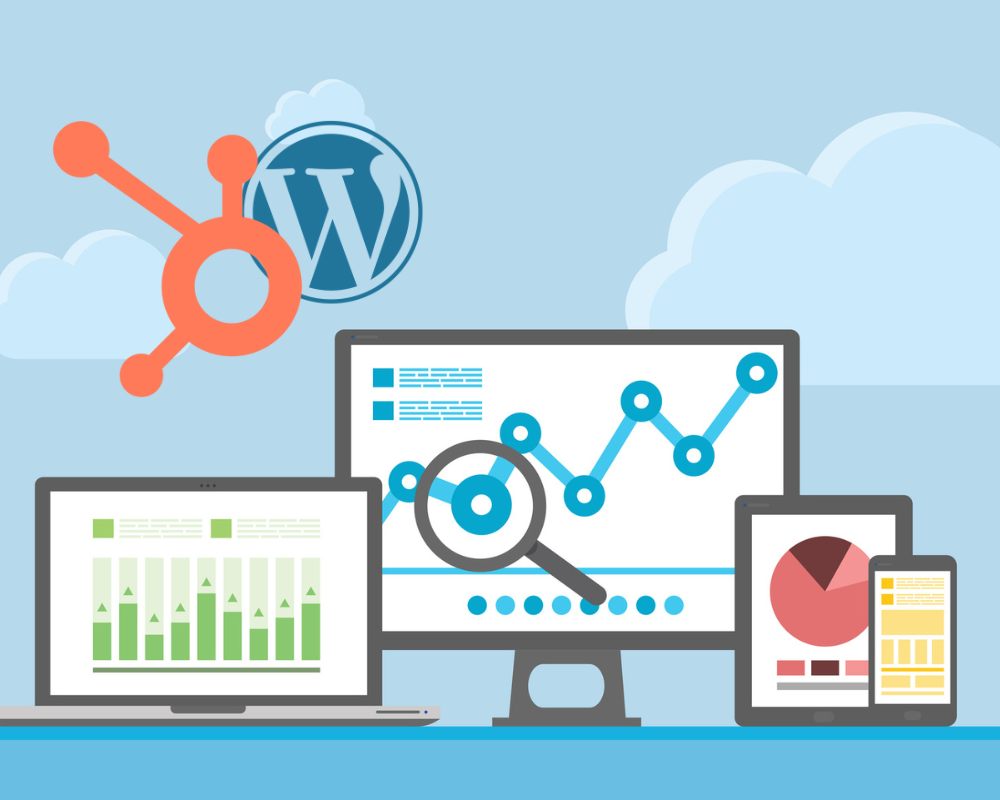Inbound Marketing Strategy: How to Create Buyer Profiles

Who are you selling to?
When we ask our inbound marketing clients this question, we frequently receive generic responses like "baby boomers," "pet owners," and "parents." There's nothing wrong with these responses: generic labels provide a bare-bones clarity that helps prospective understand who you are. Job roles, in particular, are a terrific place to start when trying to figure out who you're selling to.
However, there are smarter ways to construct true, in-depth profiles of the organizations you're selling to, which we call Ideal Buyer Profiles. You'll discover that once you've gained this knowledge, you'll be able to learn a lot more about your prospects and clients, and you'll be able to better personalize the services you provide them.
Consider this adage: If you try to please everyone, you won't please anyone. For this reason it is absolutely critical that you know who your customers are so you can please them. Otherwise, you fall into the trap of not really pleasing anyone.
"You've got to know who your customers are."
Every business owner on the planet has heard this advice, but few of them actually follow it. People think they know who their customers are if they have a very broad description in mind. But think about the word "know" for a moment. When you truly know someone, say, a close friend, your knowledge about them goes way beyond a general understanding or broad description about them. You can go into serious detail about them. You could explain to a complete stranger why they are behaving the way they are with complete accuracy.
What is a buyer profile?
The Buyer Profile is the tool that gives you the power to know exactly who your customers are, and why they buy. A buyer profile (or you could call it a customer profile, client profile, patient profile, or a consumer profile), is a detailed description of your current customers. In a buyer profile, you’d identify purchasing behaviors, pain points, psychographic data, and demographic data with the intent of targeting similar customers in your sales and marketing campaigns.
There is a difference between buyer personas and buyer profiles, which we will clarify right now.
Buyer profiles are made up of the clients you already have on hand. Rather than creating ideal and fictitious traits for a buyer persona, you would conduct an analysis of your present customers to determine the types of customers who have historically been the most likely to purchase from you.
A customer profile is based on the data and factual details about your client base, whereas a buyer persona is a fictionalized personality who acts as a representation of your customers. This single description contains everything you need to know about a group of customers. As a result, a customer profile comes first, followed by the creation of a buyer persona.
What data does a buyer profile contain?
There are different segments of a buyer profile such as demographic, psychographic, behavioral, geographic, and sometimes other factors. Here are some examples of the different data point factors for each segment:
Demographic Factors
Demographics are a customer's concrete traits that can be utilized to understand consumer behavior in a broad sense. The following characteristics (and more) are included in demographics:
- Age
- Sex
- Job Title
- Income
- Education Level
- Family Status
If you're a B2B company, other factors to consider include the company's size, industry, and other characteristics.
Psychographic Factors
Psychographics are used to understand how, when, and why people buy things. Demographics alone aren't enough to understand how, when, and why people buy things. These variables are related to a customer's attitudes and psychological makeup, and may include:
- Lifestyle
- Goals
- Pains
- Habits
- Values
- Interests
Psychographics are useful for understanding the buying experience, as well as the journey of a consumer after they've made a purchase from you.
Psychographics are incredibly valuable to consider when identifying the triggering events that lead to buy, producing value-based marketing to attract prospects, empathizing with their predicament, or inventing new goods that answer existing demands.
Behavioral Factors
While psychographics are concerned with psychological characteristics, behavioral segments are concerned with how those characteristics are manifested in action. Consider segmenting your data by:
- Engagement
- Readiness to Buy
- Purchasing History
- Product Usage
- Satisfaction
- Loyalty or Account Age
- Attention Required
Customer assistance segments based on behavioral features are among the most useful. It can assist service teams in discovering customer interaction trends and how these trends translate into recurring revenue and customer pleasure. These things can be improved once they've been measured.
Geographic Factors
When location has an impact on how customers connect with a company or receive their products, geographic aspects are important. Here are some examples of popular geographic segmentation methods:
- City
- Area
- Region
- Country
Using geographic data to inform logistics, support implementation, and marketing can all benefit your company.
How to Create a Buyer Profile
- Contemplate the issue that your company is attempting to solve.
- Examine the buyer journey map.
- Study the demographics.
- Gather feedback from customers.
- Consider the circumstantial factors.
- Know what your market.
- Create the buyer personas.
- Conduct an analysis of your buyer personas.
1. Contemplate the issue that your company is attempting to solve.
If you're starting a new business, concentrate on the problem you're trying to solve and the kind of people who will be confronted with it. If you already have a customer base, it's critical to examine your present users and their behavior.
People are the unifying denominator in all of these techniques. It makes no difference if you have a few consumers or tens of thousands. You must know who your customers are (and will be), how they use your product or service, and why they use it.
2. Review the buyer journey map.
Mapping your customer journey is a key component of your inbound marketing strategy. A customer journey map is a document that details each touchpoint a customer must travel through in order to achieve a goal with your business. While these take time to complete, they provide a comprehensive picture of who is purchasing your items and connecting with your business.
Learn more by reading our blog post about mapping the customer journey.
To establish a customer profile, however, you do not need to complete a customer journey map. Simply considering the customer's journey will assist you in determining who you're attempting to reach. You'll have a better feel of what your consumers want from your company if you understand their wants, issues, and goals.
You can even go a step further and conduct interviews with clients about each location on your map. We asked users how they felt about particular milestones in the customer journey when designing HubSpot's customer journey map. Then we plotted these stories on a map to see how consumer impression evolved over the course of their journey. This provided us with valuable insight into what our customers liked and disliked about our products.
3. Study the demographics.
It's ideal to start with external demographics, then dig deeper into needs, and then consider your company's product when defining your client profile.
You can utilize the following external attributes to define your client profile:
- What is the best market for your product? (For example, healthcare software)
- Is there a certain vertical in which they operate? Patient Management System for Health Systems, for example)
- How much money do they make each year? (example: +$10 million)
- How many people do they employ? (For example, a company with 150 or more employees)
- What are the locations of these businesses? (for example, in the United States)
4. Gather feedback from customers.
It's easy to depend solely on the information provided by your team while creating your profile. However, if you don't spend time with your customers, it's difficult to get to know them. If you want a clear picture of what your consumers are like, you need to meet them. Consumer interviews are thus one of the strongest resources for developing a customer profile.
Customer interviews provide your staff the opportunity to speak with people one-on-one. They may read their consumers' real-time responses to inquiries and build human interactions with them. This enables them to discover useful information that raw data cannot.
Consider putting up a phone or video chat if you can't reach a specific group of customers. While it isn't as engaging as a face-to-face conversation, it is still a viable method of reaching your target audience. If your clients are eager to schedule a call with you, you can be confident that they are committed customers who are worth your time. You'll have more consumers in the future if you pay greater attention to them.
5. Consider the circumstantial factors.
It's vital to delve deeper into the contextual specifics once you've determined the outward aspects that describe your client profile.
If I were creating a SaaS company, for example, I'd want to know the following things about my customers:
- What is the size of their team?
- What are the most significant obstacles they face?
- What kind of technology are they employing?
- What do they want to accomplish in the next three months?
- What are their objectives for the coming year?
- What criteria do they use to evaluate issues?
- For them, what does an ideal world entail?
- What effect does the particular issue have on their team?
- Today, how are they attempting to fix the problem?
You should now have a good understanding of your target clients' general make-up and aims based on these external elements and contextual data. Finally, look internally to see how you can support them based on all of this information to complete your customer profile. When creating your consumer profile, consider the following questions:
- What kind of value can you offer these clients? (Saving them money or time, increasing income, and so forth.)
- Are you able to alleviate their main concerns?
- What characteristics set you apart from competitors or a homegrown process?
- What role does your solution play in their short and long-term objectives?
6. Know your market.
One important contextual factor to think about is how your brand compares to others in the industry. You should be aware of how your clients perceive your brand and other businesses are vying for their attention. This should give you a solid notion of the kinds of consumers you'd like to recruit and keep.
Understanding your sector also aids in the development of your brand identity. You must discover a strategy to differentiate your goods and services if you want to stand out. However, you don't want to publicize any modifications that will annoy your customers. You can copy your competitor's effective approaches for introducing and educating customers about a new product or feature if you know which marketing strategies your customers currently respond to.
7. Create the buyer personas.
Keep in mind that you're selling to real individuals with real personalities, feelings, and needs. After you've determined the characteristics of your client profile, the following step is to determine who you want to contact within the firm. This will come in handy when trying to build a relationship with the account and figuring out who the decision makers and influencers are. Here are some crucial details to learn about your customer profile's members:
- Title(s)
- Age range
- Education level
- Income level
- How will they use your product/service?
- On what marketing channels can you reach them?
- What are the key responsibilities for their role?
- What role do they play in the decision-making process?
If you need a tool to help you build, visualize, and share your personas, try HubSpot's Make My Persona tool.
8. Conduct an analysis of your buyer personas.
A client profile is an important tool for expanding your business. This description will serve as a guide for determining which items or features to develop, as well as which marketing channels to employ in a campaign.
You risk selling a product or service that doesn't match the precise wants of any possible clients if you don't have it. Alternatively, you may find yourself marketing to prospects in a way that does not correspond to their understanding of the issue. Your goal should be to operate in accordance with your client profile, which should guide everything from feature development to go-to-market strategy.
Gather external elements, qualify contextual facts, and establish a comprehensive grasp of how your firm offers value to each client type as you build your customer profile.








